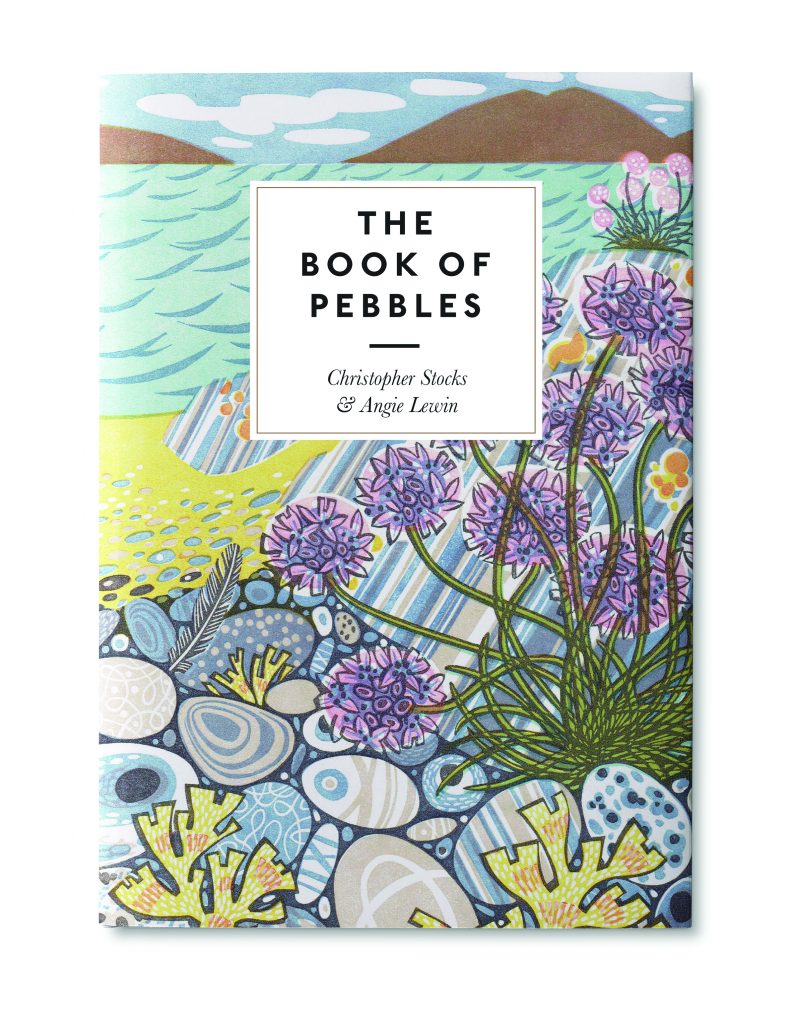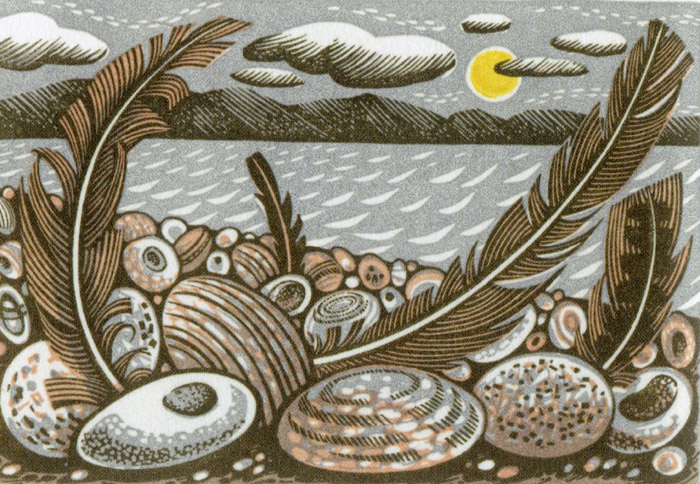 Who hasn’t picked a pebble up whilst strolling the coast of Britain? They look especially inviting lying covered in the shallow water of a rock pool, the wetness showing colour that pales when the salty surface dries. There is something about walking along a beach that is meditative and frees our minds, allowing us to focus on – well, what is at our feet. Just shingle and horizon. Homeo sapiens are hunter-gathers with brains programmed to look for patterns and anomalies within these. For example, to find a juicy berry amongst a thicket and our modern interpretation may be to find the most alluring pebble.
Who hasn’t picked a pebble up whilst strolling the coast of Britain? They look especially inviting lying covered in the shallow water of a rock pool, the wetness showing colour that pales when the salty surface dries. There is something about walking along a beach that is meditative and frees our minds, allowing us to focus on – well, what is at our feet. Just shingle and horizon. Homeo sapiens are hunter-gathers with brains programmed to look for patterns and anomalies within these. For example, to find a juicy berry amongst a thicket and our modern interpretation may be to find the most alluring pebble.
 Christopher Stocks suggests many more reasons – historic and contemporary – for this popular activity in “The Book of Pebbles”, a new book published by St. Jude’s and lavishly peppered with artwork by Angie Lewin who traces the routes of her own pebble-picking habits in a foreword to the book. Following chapters examine other reasons for and peaks in the popularity of pebble collecting; from fossil-hunting Victorians to those inspired by Derek Jarman’s “Garden” in Dungerness.
Christopher Stocks suggests many more reasons – historic and contemporary – for this popular activity in “The Book of Pebbles”, a new book published by St. Jude’s and lavishly peppered with artwork by Angie Lewin who traces the routes of her own pebble-picking habits in a foreword to the book. Following chapters examine other reasons for and peaks in the popularity of pebble collecting; from fossil-hunting Victorians to those inspired by Derek Jarman’s “Garden” in Dungerness.
In the back of the book is a handy section on the best beaches to visit for pebble collecting, advice on the legality of the activity and a glossary of commonly found types of stone. ” The Book of Pebbles” is an enjoyable, fairly quick read but one must allow time to linger over Angie’s prints and watercolours whilst fully absorbing the words. Signed copies of the book and limited edition prints will be available at Tinsmiths during Angie’s exhibition here, Prints, Pots and Plants; an exhibition with potter Mark de la Torre, running from 16 March to 29 April 2019. Opening hours Tuesday – Saturday 10am to 5pm.
 Tideline Feathers, Wood-Engraving by Angie Lewin
Tideline Feathers, Wood-Engraving by Angie Lewin
